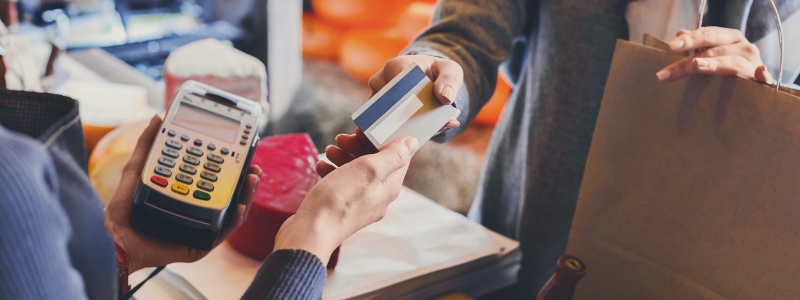Peak Season and the Annual Race for Retail Sales
Global markets face a lot of uncertainty right now, but here we are back at the time of year where consumers’ greatest gift is a bump to the economic cycle. That’s right, it’s peak season again. It’s the time of year when jobs are on the rise – especially seasonal varieties, and it’s the time of year where the investments in productivity you made throughout the year really get to prove themselves.
This year we’ve seen and covered a lot around robotics, and the future of “cobots” in the supply chain. It’s one area where there has certainly been a lot of tangible development. With drone approvals coming back to the forefront this autumn, we’re bound to see more about that in the year ahead. But what businesses deploy across their retail and supply chain operations today are the technologies that have been proven and are ripe for the market. That technology shopping cart includes new Android mobile computers, and customer-experience technologies that facilitate easier purchase and delivery. One of many growing use cases for these new deployments is the Buy Online, Pickup In-Store experience (BOPIS). Not new, BOPIS is showing serious acceleration, with a 47% adoption rate by retailers during last year’s season.
Customer experience encompasses a number of consumer engagements with a brand, with the purchase being the common intersection. An in-person point of sale transaction may be affected by how the retailer is able to ensure stock on the shelf, associate availability and knowledge on the floor, and brevity of the checkout line. For ecommerce: did the right products arrive? Were they the correct products (including size, quantity, etc.)? Was anything damaged? Were the deliveries on time and complete?
In store pickup of online purchases have a mix of technologies and a combination of the productivity solutions required by each of the previously mentioned purchase experiences. BOPIS means my order hits a queue for a store or warehouse worker. That worker picks and packs my order so that it is ready for me by a set time. Depending on the retailer, this may be a time of my choosing, or a minimum lead time defined by the store. The customer experience is defined by the accuracy and completeness of an ecommerce transaction, coupled with the stock availability and speed of check out elements of an in-store purchase.
The technology that drives the BOPIS workflow increasingly includes using the same mobile computers on-floor associates are using. These may be Android mobile computers used for tasks ranging from shelf audits to guided selling to mobile checkout. Software applications on these devices connect to the warehouse management system when checking inventory in the back of store, and this is particularly relevant for the associate in the BOPIS workflow. In this scenario, the retail associate will often fulfill the BOPIS order from back-of-store stock. Shifting from a retail floor role into a warehouse picking role, the associate’s task workflow may be augmented with voice-directed picking. All together, this makes for more for regular and seasonal hires to learn, so it’s important that technology is put in place that is easy and intuitive to learn. Stores don’t have time for a two-week training to newly onboarded staff.
With a shorter holiday shopping season this year (only 26 shopping days from Black Friday to Christmas Eve), some in the retail industry are sounding a cautionary alarm. On the contrary, this compressed calendar means outlets that empowered their store associates with the tools to work faster will win the day. With six less days to shop, buyers are still going to place their orders, but retailers will need to fulfill them in a compacted schedule. Those that planned for a more productive 2019 peak season will surely find themselves, and their customers, satisfied with their purchase decisions.

